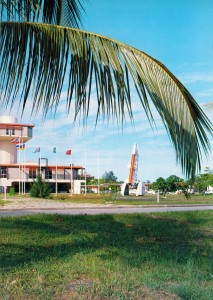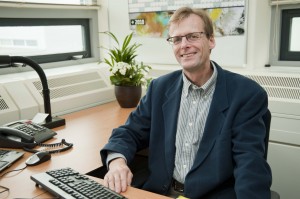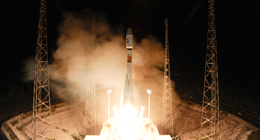Reading the Gaia blog reminds me of the launch campaign of Hipparcos, Gaia’s precursor mission launched in 1989, when I was on training in Kourou to become Range Operations Manager (or DDO – Directeur d’opérations in the French space jargon). I was privileged to be the first non-French staff member seconded by ESA to work for CNES at the Spaceport.
In those days, we were launching Ariane 3 and Ariane 4 vehicles. The arrival of a new launch team was always an exciting moment. The DDO and his team had been preparing for many months, and this was the start of a work-intensive project of two to three months leading up to a very visible common goal: a successful launch to be performed on time and in respect of safety, quality and cost requirements. Each time the spacecraft launch teams impressed me with their sophisticated spacecraft and the large number of containers filled with ground support equipment.
Before their arrival, we had already met some of the campaign managers in planning meetings in Europe, but in the first days of the campaign we had to quickly learn to work with a completely new team and give them the support they needed to transport the equipment from the airport, set it up and connect the check-out stations in the payload processing building, to allow them to safely unpack the spacecraft and conduct the first operations – basically check that all of the spacecraft subsystems had survived the flight from Europe and were still working properly: no leaks in the propulsion system and all electrical systems functioning well. They would probably also check the alignment of the optical instruments.
For the launch campaign teams from ESA and from the spacecraft manufacturer, the first days were also important to adapt to the new working environment and to the time difference of four to five hours with their colleagues at home. But the greatest differences were in the living environment. Our new colleagues stayed away from their families for several weeks and had to get used to an equatorial climate with 90% air humidity and 30o C average temperature, and live in a small town with very different leisure activities than in a “normal” European city such as Toulouse, Munich or Leiden…
For quite a few of our new colleagues, that we called in French “missionaires satellite”, this was their first time in French Guiana, and their primary concerns were naturally the health, climate and rainforest “unknowns”. Luckily, already in those years, Arianespace offered the professional services of Free Lance, a local start-up whose young employees would give advice on anything from car rental to weekend activities, and from accommodation bookings to medical services. I remember more than one missionary being relieved by the briefing of a local doctor explaining that snakes and mosquitoes are very low on the statistics of health threats, compared to the top two risks: road accidents and AIDS…
I believe this Free Lance service is still provided. I will ask my friend François Monier who is the founder of the Free Lance company in Kourou if he wants to tell us in a blog post about his work and how his team is supporting the Gaia team that has just newly arrived.
This blog post was submitted by Juan de Dalmau. Juan worked several years at the Kourou Spaceport for CNES, seconded by ESA. First in a Management Controller position for Human Resources and then as Range Operations Director (or DDO – Directeur d’opérations).
Thank you Juan for sharing your experience and memories!




Discussion: one comment
Nice story!
It would be nice to know more about the daily life at Kourou.